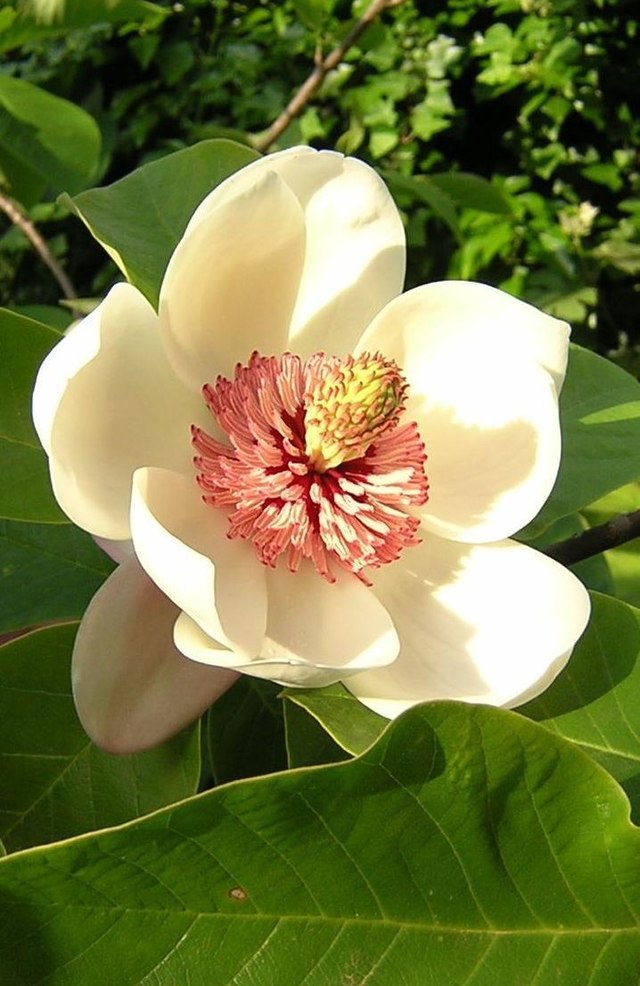Few trees command admiration like the magnolia. Towering yet delicate, ancient yet ever renewing, the magnolia is a botanical marvel—its blooms like porcelain cups perched atop sturdy branches, unfurling at winter’s end or in the height of spring. In myth and garden alike, the magnolia is a symbol of endurance, dignity, and natural grandeur.
Native to East Asia and the Americas, the magnolia has graced temples, city parks, and southern verandas for centuries. With their colossal blossoms and lush foliage, these trees do not simply bloom—they perform. Let us delve into their care, for such beauty, though robust, thrives best with thoughtful stewardship.

Portrait of the Magnolia
The magnolia belongs to the Magnoliaceae family, comprising about 240 species, many of which are prized for their spectacular flowers and broad, glossy leaves. These ancient plants date back to before bees existed, with their flowers adapted to beetle pollination—an echo of evolution itself.
Magnolias vary widely in size and form, from towering deciduous trees to compact evergreen shrubs. Popular varieties include Magnolia grandiflora (evergreen, with massive white blooms), Magnolia stellata (star magnolia), and Magnolia × soulangeana (saucer magnolia).
Foliage and Form
Magnolia leaves are typically large, leathery, and glossy, ranging in color from deep green to bronze. Evergreen species retain their foliage through winter, while deciduous types drop their leaves in autumn, leaving behind sculptural branches.
Magnolia trees can grow from 2 metres (6 ft) to over 20 metres (65 ft) tall, depending on the species and conditions. Their shape may be pyramidal, rounded, or spreading—making them ideal as both specimen trees and elegant shade providers.
Blooms and Fragrance
Magnolia flowers are unmistakable: enormous, sculptural, and often sweetly scented. Depending on the variety, they appear in shades of white, pink, purple, cream, or yellow, with petal-like tepals arranged in cup, star, or bowl shapes. Some, like the Magnolia grandiflora, release a rich lemony perfume; others are subtly fragrant.
Bloom time depends on the species. Deciduous magnolias often bloom in late winter to early spring, before leaf-out, while evergreen types bloom from late spring into summer.
The Right Time to Plant and Care for Magnolias
Magnolias are resilient, long-lived, and slow to establish—meaning early care greatly influences their future health. Though they require little pruning, timing is essential when planting or adjusting their shape.
| Month | Planting | Flowering |
|---|---|---|
| January | ❌ | ✅ (some early bloomers) |
| February | ✅ (if mild) | ✅ |
| March | ✅ | ✅ |
| April | ✅ | ✅ |
| May | ❌ | ✅ |
| June | ❌ | ✅ (late bloomers) |
| July | ❌ | ❌ |
| August | ❌ | ❌ |
| September | ✅ (cooler climates) | ❌ |
| October | ✅ | ❌ |
| November | ✅ (mild areas only) | ❌ |
| December | ❌ | ❌ |
✅ = Recommended ❌ = Not advised
Note: Pruning is rarely needed with magnolias and should be minimal if done. Avoid heavy cuts, especially on mature trees, as they do not recover well.
Ideal Watering, Sunlight, and Environment for Magnolias
Watering
Magnolias enjoy consistently moist soil, especially when young. Deep watering once per week is ideal during dry periods. Mature trees are more drought-tolerant but still benefit from occasional soaking. Avoid waterlogging, particularly in clay soils.
Sunlight
Magnolias thrive in full sun to part shade. For best flowering, aim for 6 or more hours of sunlight per day. In very hot climates, light afternoon shade can help protect blooms from scorching.
Indoor vs Outdoor
Magnolias are strictly outdoor plants. Their size, root spread, and light needs make them unsuitable for indoor growth. Dwarf varieties may be grown in large containers outdoors but still need ample room and seasonal light.
Temperature
Magnolias are hardy in USDA zones 4–9, depending on the species. While Magnolia grandiflora loves warmth and humidity, deciduous types like M. stellata tolerate cooler winters and flower best after a good chill.
Ideal Soil Conditions for Growing Magnolias
| Soil Feature | Optimal Condition | Why It Matters |
|---|---|---|
| Soil Type | Rich loam with organic matter | Supports strong root development and nutrient availability. |
| Texture | Moist, slightly loose | Promotes deep rooting and even moisture distribution. |
| Drainage | Well-draining, not waterlogged | Prevents root rot and fungal infections. |
| Moisture | Consistently moist, especially when young | Encourages healthy foliage and abundant flowering. |
| Soil pH | Slightly acidic (5.5–6.8) | Enhances uptake of key nutrients like iron and magnesium. |
Common Problems & Solutions
| Issue 🐾 | Symptoms 🔍 | Solutions 🛠️ |
|---|---|---|
| Leaf Scorch 🔥 | Browning edges, especially in dry spells | Increase watering, mulch to conserve moisture, shelter from wind |
| Scale Insects 🐞 | Sticky leaves, white/brown bumps | Apply horticultural oil; encourage beneficial insects |
| Late Frost Damage ❄️ | Wilted buds and blackened tips | Choose later-blooming varieties; protect during sudden cold snaps |
| Chlorosis 🍃 | Yellowing leaves with green veins | Test soil pH; apply iron supplement or compost |
| Poor Flowering 🌸 | Few or no blooms | Ensure proper sun, avoid over-fertilizing nitrogen, prune lightly |
With its bold blossoms and commanding structure, the magnolia transforms every garden into a stage of seasonal splendor. Whether heralding spring with luminous flowers or shading summer lawns beneath glossy leaves, the magnolia is a tree of poetry, power, and patience.